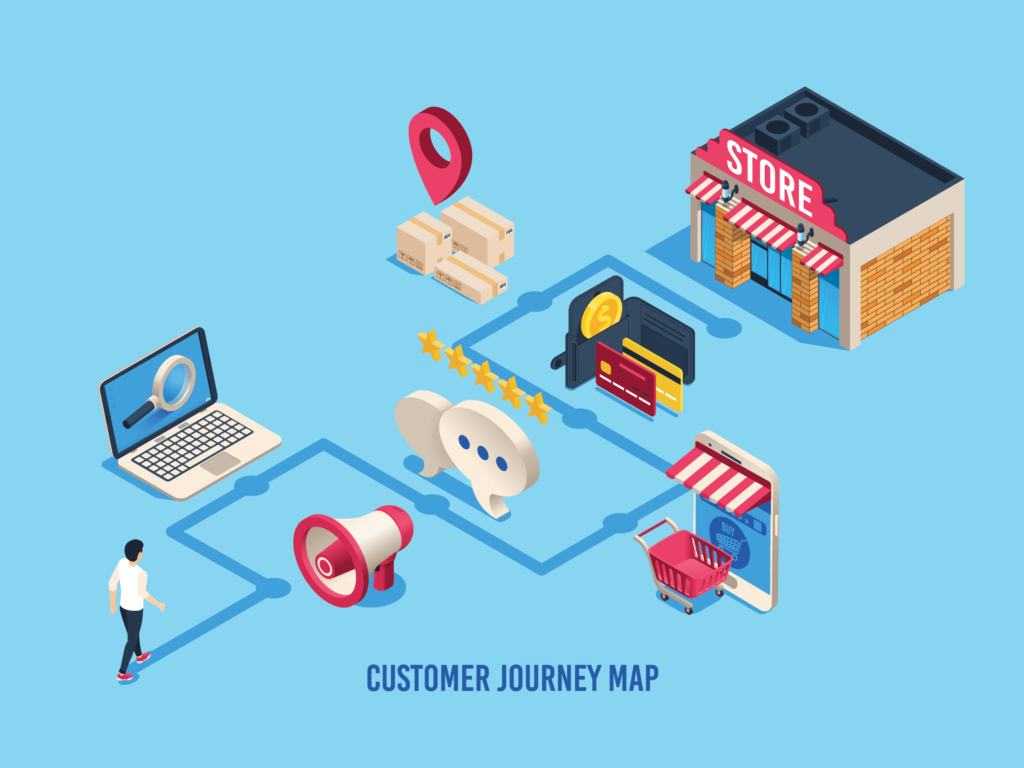
We are all familiar with the traditional sales funnel, where a consumer moves seamlessly from awareness, to consideration, and finally onto purchase along the path to conversion. However, with the rise of mobile, search engines and social media, this funnel has become increasingly outdated. The destinations on the journey to conversion remain the same, but the order at which they are arrived at has changed utterly, adding layer upon layer of complexity to the modern sales funnel.
This presents a challenge to marketers, as we strive to appear in front of our target audience at the right time and at the right moment. In this article, we take a closer look at some of the challenges and opportunities presented by the modern consumer journey.
The New Marketing Funnel
Modern consumers are overwhelmed with information and have more tools at their disposal to make an informed purchase decision than ever before. Before making a purchase, the average consumer hits multiple ‘touch-points’, switching from mobile, to tablet, to laptop and back again.
Recent research carried out by Google illustrates the complexity of the modern marketing funnel.
Over a period of six months, the research found that no two consumer journeys are alike.
Indeed, most conversion journeys observed in this period didn’t look like funnels at all, resembling rather ‘pyramids, diamonds, hourglasses, and more’. Google attributes the evolution in consumer behaviour to the rise in digital technology and the ubiquity of mobile devices.
People are now able to ask questions immediately and as often as they like, combining product reviews with price comparisons and brand research.
This is a journey built around intent, filled with numerous moments of awareness and consideration as consumers broaden and narrow their research before finally making a purchase.
Offline and Online
Another layer of complexity is added to the modern consumer journey when we learn that many consumers transition between online and offline before making a purchase decision.
Marketing research from Google demonstrates that, on average, only 11% of consumers go from consideration to purchase purely online, while only 12% take the same journey exclusively offline. For most products, however, the overwhelming majority – often over 80% – combine offline and online research in their path through the conversion funnel.
This means that marketers need to adopt a more rounded view of the consumer journey.
The distinction between offline and online consumers is eroding, and the most effective marketing campaigns have evolved to reflect that.
A Mobile-First World
More than anything else the modern consumer is a mobile-first consumer.
Mobile and tablet internet usage first exceeded that of desktop in 2016 (57% to 43%), and that disparity will only continue to grow in the years to come.
While reaching mobile users presents another challenge for marketers, it also provides opportunities to reach consumers in a way which isn’t possible on desktop. Indeed, mobile can help to bridge the gap between offline and online consumer behaviour.
For tech products, for example, a survey of consumers found that over 50% used their mobile phones to research online while browsing in-store, a consumer behaviour trait known as ‘showrooming’. Mobile is also used far more than desktop for consuming media, such as product reviews, further allowing marketers to tailor their messaging by device and platform.
Key Takeaways
Clearly, the modern path to conversion is highly complex, with multiple touch-points taking place throughout the funnel, as consumers jump back and forth between awareness and consideration, across different devices, offline and online.
However, within the haphazard modern path to conversion, some patterns emerge.
Offline and online now exist in tandem. If marketers know that their target audience is moving between offline and online, they can adapt their marketing strategy accordingly, adopting a more holistic approach.
Activity in the modern conversion funnel is predominantly mobile-driven. In light of this, marketers must consider catering their messaging by device, as well as ensuring their platforms are optimised for the mobile experience.
Finally, brands and marketers must adapt to the increased emphasis on research and consideration. If consumers are spending more time than ever before to research products and services this provides the perfect opportunity to reach them in that moment with content that is informative and relevant to them. Ensuring your Brand is front of mind by the time they come to make a purchase decision.
If you would like assistance with reaching your target audience online, contact digital advertising specialists Clark St. James on 01603 343477 or info@clarkstjames.com. Our team delivers a scalable return on investment across the major search and social media advertising channels.